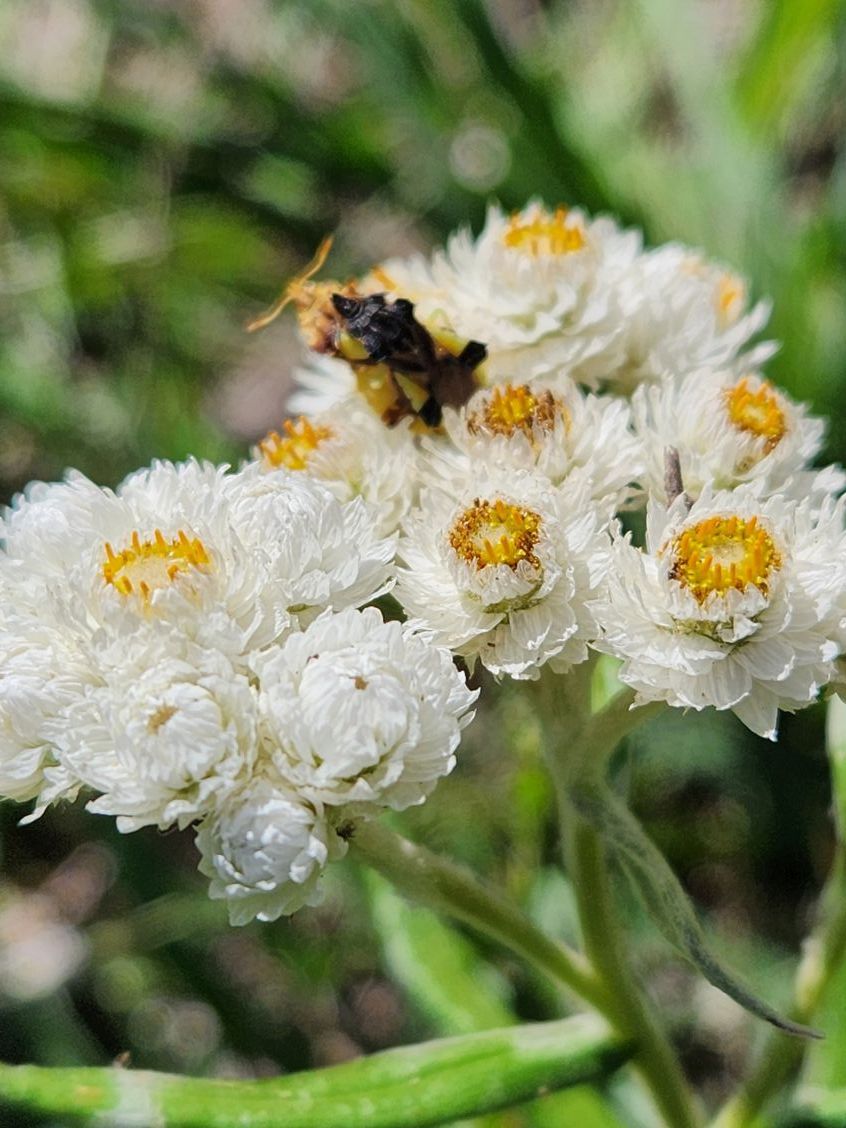Plant of the Week: Pearly Everlasting
posted
Written by: Engineering Conservation Crew
Over 100 species of Anaphalis (everlastings) are recognized in India, south Asia, and Europe, but only one (A. margaritacea) occurs naturally in North America. Our N.A. species is commonly called pearly everlasting for the pearl-white bracts that surround the yellow disk flowers and it holds a special place in our native environment and in our hearts.
Native Americans often utilize odoriferous plants for medicinal purposes and pearly everlasting is no exception. Common uses for this species included ointments for sores, boiling in tea for rheumatism, or the smoke was utilized to treat colds. The plant is also among many native species used as a tobacco substitute. Furthermore, their bracts remain fresh in appearance long after the central disk flowers have wilted, making them well suited for dried flower arrangements, hence the common name “everlasting”. There are separate male and female flowers, usually on separate plants, and they take on different gender-specific yellow or rust-yellow color.
In the spring, this plant is a larvae host for many skippers as well as the American Lady- Vanessa virginensis. The young larvae create a silken web around the plant to feed. This can look discouraging if you are trying to grow this plant, but like in many native plant-insect relationships, the plant generally makes a full recovery and flowers later in the summer.
Perched atop this pearly plant are two predatory insects called ambush bugs. These apt hunters lie perfectly motionless on flowering species that attract their favorite meals and, at just the right moment, strike out with their praying-mantis like claws to capture their prey. Their favorite meals include flies, small moths, aphids, and can even catch creatures ten times their size like bumblebees and butterflies. While this may seem like a negative thing, predatory insects like ambush bugs are essential parts of a functioning ecosystem. They help keep insects populations in check, including garden pests, and we would quickly notice if them and other insect predators were gone.
Each week during the growing season, the Engineering Division focuses in on a Plant of the Week to raise awareness of different plants in the field that benefit our environment. The Engineering crews in the field tasked with conservation share expert insight on these plants and their benefits each week in a creative way!

